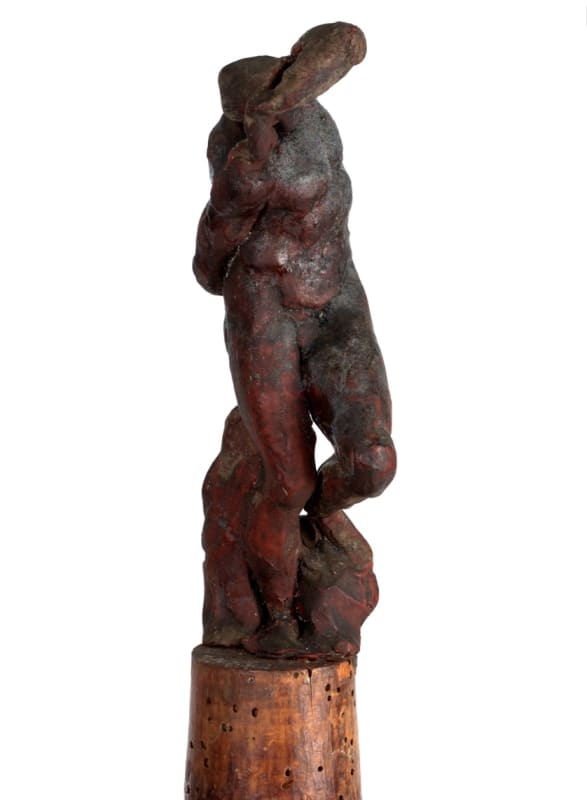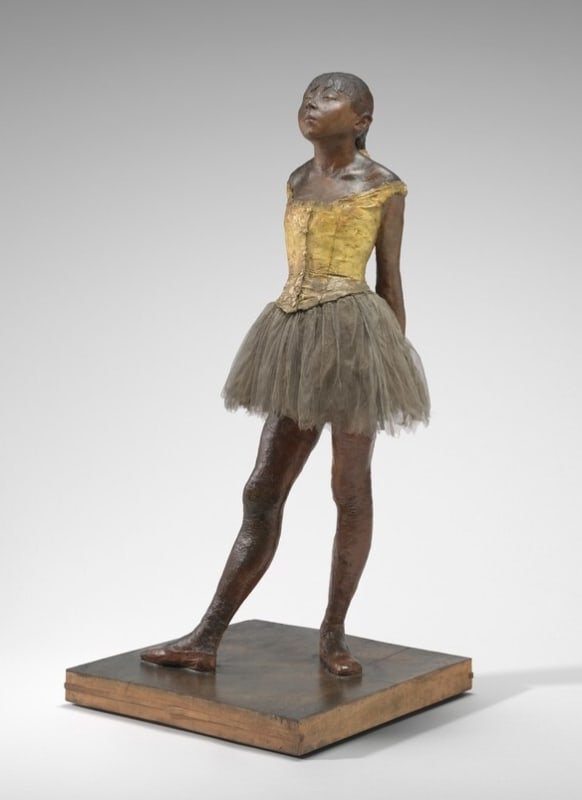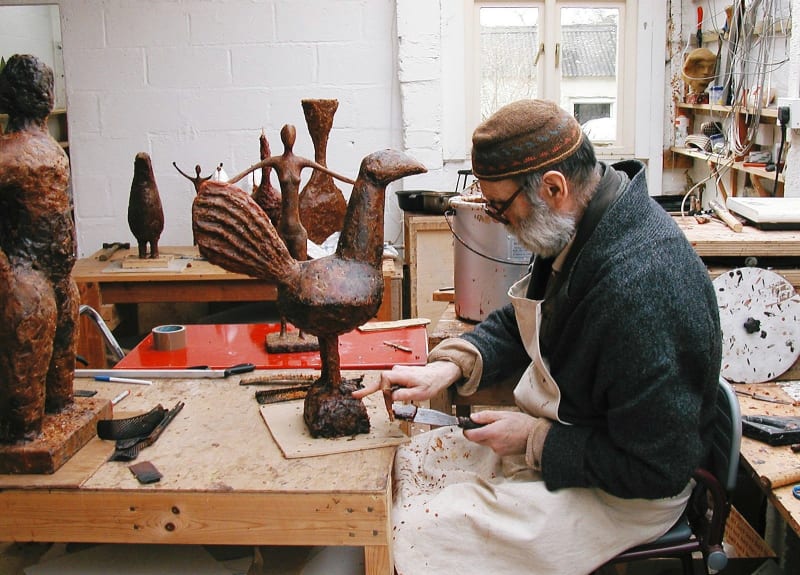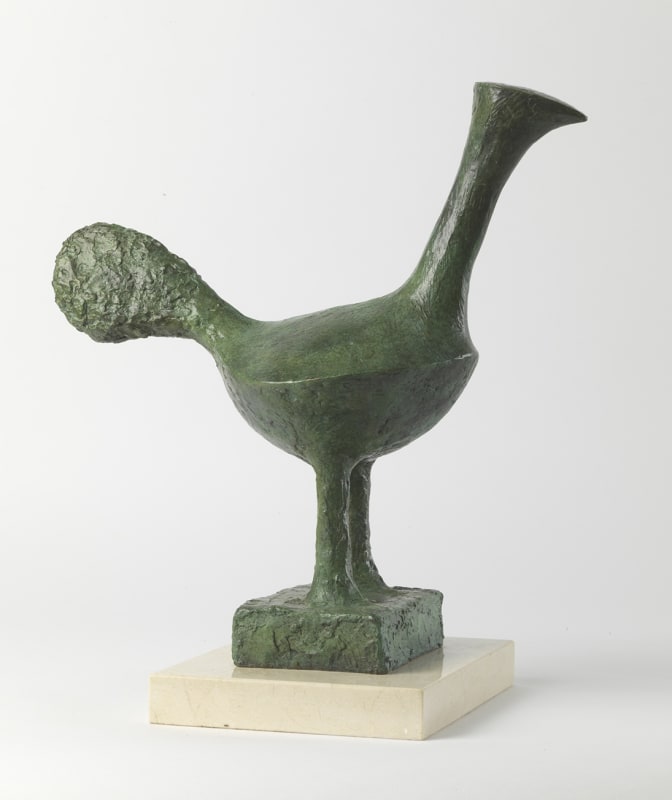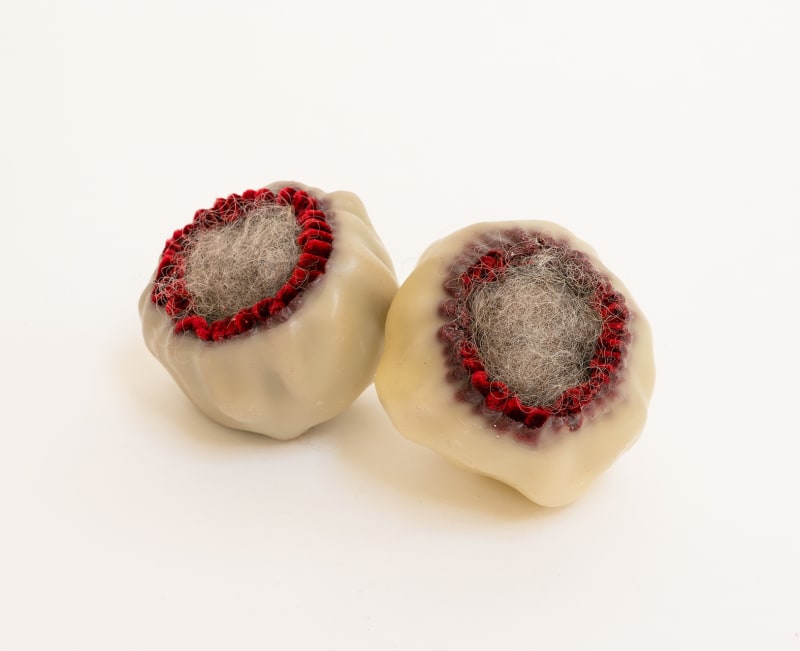Welcome to the last of our Sculptors' materials emails - we hope you’ve enjoyed the series. This week we are looking at a humble material whose warmth, plasticity and beguiling versatility has inspired sculptors for millennia both as a material in its own right and as a material integral to the process of casting: wax.
We began this series considering the moment when humans first discovered molten metal, the conception point of metal casting which enabled us to cast small solid pieces of jewellery and ceremonial objects. It would not have taken long for these ambitious early makers to have realised that casting metal solid was limited not only by the need for greater quantities of precious material but by shrinkage which caused cracking and therefore restricted size – so how to make it hollow?
It is thought to be the area round Baghdad over 6,000 years ago that the method of making hollow bronzes with wax was first developed. These works began with a roughly shaped core made of clay, crushed fire brick mixed with sand, animal dung and wheat chaff. Once dried, the form was dipped repeatedly in molten beeswax to build up layers to an appropriate thickness for the metal. The form and detail was then inscribed or added to the final wax layer before being covered in the same clay and dung mixture or investment with the core held in place with pins. Once fired the wax melted to leave a thin space for the molten metal to fill.
In this process the original was destroyed so over the next centuries the way wax could be used in casting was continually refined. With the help of a mould, hollow waxes and piece moulds could be made that enabled larger works and repeat castings. This process which has now been used for millennia and still follows the same process today is referred to as Lost wax casting or cire perdue.
The Lost wax casting process can be best simplified into a series of transitions from positive to negative form and materials transitioning from solid to liquid states. Thanks to its ready availability, its low melting point and ability to pick up fine detail, wax is one of the most important conduits between the artists original model and the final metal.
In the Lost wax process a mould is taken from the original sculpture using liquid gelatine, latex or today rubber with a rigid plaster casing. Once set the original sculpture is removed so that the negative imprint remains. This is then carefully painted with layers of molten wax which cool to produce an exact, highly detailed, replica of the original. This can then be removed, joined to its other half (like an Easter Egg) or other parts and delicately fettled to remove any seams or imperfections. The wax is then ‘sprued’ with a system of wax runners and risers to allow the metal to run freely into the mould and for the gas to escape. Where there is wax there will be metal.
Nowadays foundries and artists use a variety of different waxes with different properties. Earthwax is a naturally occurring wax which is mined melted, sieved and reformed in blocks. It is more rigid so is often used in combination with beeswax to add strength. Synthetic microcrystalline waxes are a by-product of the petroleum industry and have a higher melting point making them more resilient. At the foundry the waxes are stained so they can be easily identified and the highly skilled wax modellers use a dark green wax that helps show the finest detail.
Aside from its important contribution to casting, wax’s wide ranging qualities – its wide accessibility and low melting point, its plasticity when warm and strength when cool, its relative speed to cut, join and mould have made it an important sculpture material in itself.
Michelangelo is known to have made quick sketch models in wax which the writer Vasari noted he immersed in water and orientated to help see his form take shape when carving in marble. The small wax figure above is a sketch model for the unfinished marble of the Young Slave in the Accademia in Florence and is now in the collection of the Victoria & Albert Museum.
Medardo Rosso enjoyed using wax to convey a sense of spontaneity, fleeting expression and an element of translucence in his work by using a layer of wax over a plaster form. Edgar Degas only ever exhibited one sculpture in public during his lifetime Little Dancer Aged Fourteen, 1878-1881, made in coloured wax with real hair and fabric costume. It was abhorred by the critics and it was only on his death in 1917 that over 150 wax sculptures were discovered in his studio that were later cast in bronze by the foundry Hébrard.
For conceptual sculptor Joseph Beuys wax symbolised warmth in his cryptic installations and American sculptor Lynda Benglis uses wax to make three dimensional paintings. For Pangolin London sculptor Susie MacMurray wax offers a material that is both tactile and visually soft contrasting with the 'bite' she gets from using sharp fish hooks or electrical wire. She says:
One of the main ways I work with wax involves a process of dipping and carving back. I begin with a core of something tightly bound. Depending on scale that could just be feather ends bound with thread, as in Murmur, a fishhook with a small tie of cotton, or something larger like a wire or rubber end bound with bandage as in Rapunzel or Eve. Then I build up a form by repeated dipping in microcrystalline wax, carving back to manipulate the form as I go.
I end with a final dip so the surface is smooth and glossy.
Wax can also offer sculptors a gateway. Once an artist masters handling wax at the right temperature it can transform an artist’s work. For Charlotte Mayer it allowed her to give texture to her fragile, carved wooden works which could then be cast. For ceramic sculptor Merete Rasmussen it allowed her to make unique works in wax that could be cast in bronze and for Breon O’Casey it opened a door that had previously been stubbornly shut. He wrote:
I had made several attempts at sculpture in the past, after all I had spent many years working for sculptors, but to no avail. I couldn’t seem to think in 3D, but I came to it eventually through the back door. I had made a number of animal brooches, and these evolved into little silver animals in their own right. Conor Fallon, the Irish sculptor, introduced me to wax as a material, which I found more sympathetic than clay or plaster, and I began to make small wax figures and getting them cast in bronze. And these grew in size.
A FEW FACTS ABOUT WAX
1. The earliest detailed written description of the lost wax casting process dates to 1553 when Benvenuto Cellini cast his highly detailed Perseus for Duke Cosimo d’Medici.
2. The flashpoint of wax is about 200 degrees Celsius so must be carefully watched when melting. Fortunately it gives off a distinctive smell as a warning when reaching this heat.
3. It is wax’s ability to be stained and coloured that has made it an important aid to the study of medicine in its use for anatomical models. La Specola in Florence has one of the largest collections of wax anatomical models dating to the eighteenth century and is considered the oldest scientific museum in Europe.
4. At our charity the Ruwenzori Sculpture foundation in Uganda the founders have to take particular care of the wax sculptures before they are invested as there is a feathered friend that likes to eat them! The Greater and Lesser Honey Guide bird, also known as Indicator birds, are known to lead humans to bee colonies so that they can feast on the grubs and beeswax.
5. Marie Grosholtz (1761-1850) was taught wax modelling as a child by the physician Philippe Curtius and moved to Paris at a young age where she made her first wax sculpture aged 17 of the writer and philospher Voltaire. During the French Revolution she was imprisoned for three months and made models and death masks of many prominent victims. After the revolution she toured an exhibition of both hers & Curtius’ wax models around Europe eventually settling in London where having married Francois Tussaud she set up Madame Tussaud’s in 1836 now one of the city’s most famous attractions.
Images: Susie MacMurray, Eve, Wax & electrical wire; Maxing waxes at Pangolin Editions; Michelangelo Buonarroti, Wax Model of a Slave, Courtesy of the Victoria & Albert Museum; Medardo Rosso, Laughing Woman (Large Version), Courtesy of the Tate Collection; Edgar Degas, Little Dancer Aged Fourteen, Courtesy of the National Gallery of Art, Washington DC; Breon O'Casey in his studio courtesy of the artist's estate; Breon O'Casey Jungle Bird, Bronze; Merete Rasmussen, Tensity I, Bronze; Susie MacMurray, Sisters, Mixed media, Photo: Ben Blackall; Charlotte Mayer, Rondo, Bronze. Unless otherwise stated Pangolin London Photography: Steve Russell Studios.


